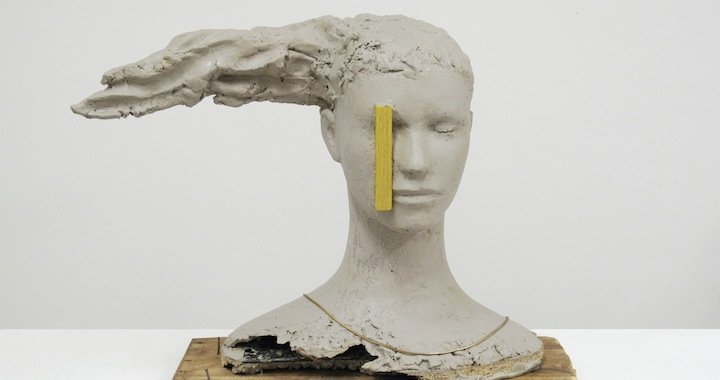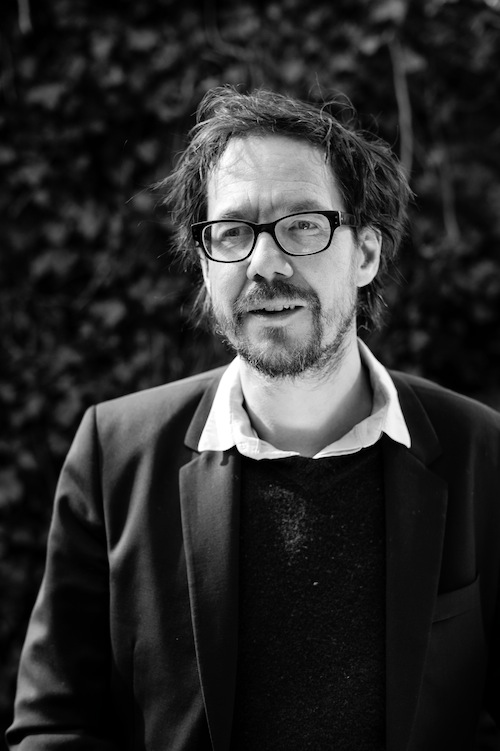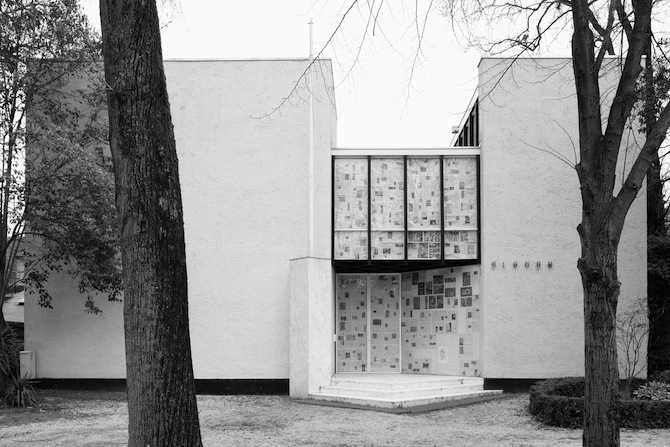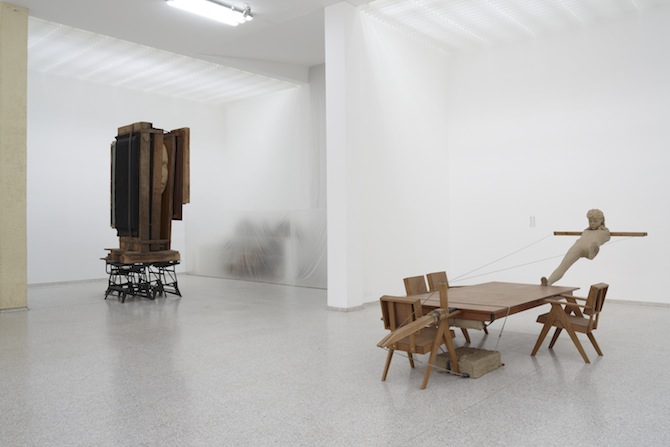
Works of Art That are Always “Just-Finished”
An interview with Mark Manders, artist for the Dutch national pavilion at the 55th Venice Biennale
19/07/2013
Fantasy and logic are two roads that may never come to cross one another. But when they do, a self -sufficient world is created. And one of these is inhabited by the Dutch artist Mark Manders (1968), who, along with curator Lorenzo Benedetti, has created the exhibition “Room With a Broken Sentence” for the Dutch national pavilion at the 55th Venice Biennale (open through 24 November).
The bright white pavilion space (which was built in 1953 and designed by Gerrit Rietveld – leader of the de Stijl movement) contains a scattering of elements from Mark Manders' world: wood and clay installations, -dimensional poetry, since every object has been inspired by specific words.
Manders has had shows in both Europe and North America – at The Hammer Museum in Los Angeles (2010), the S.M.A.K. museum in Ghent (2008), and the Pinakothek der Moderne in Munich (2003), among others. He is represented tables, chairs, and a flattened fox on the floor – which has been encircled by the artist's own belt. Everything looks as if it were frozen for just a moment – as if it is holding its breath. Actually, it seems that Manders' works have swallowed time itself. People tend to say his work is “timeless”, but the installations of the Dutch artist live in a world that doesn't even have the concept of time. There is only threeby the Tanya Bonakdar Gallery in New York's Chelsea, has participated in the great exhibition at the 11th Documenta (2002), and has also received several awards – including the Phillip Morris Prize (2002) and the Heineken Art Prize (2010).
Arterritory.com had the opportunity to meet with Manders in Venice. Dressed in a dark blue blazer and black-rimmed glasses, he speaks excitedly about what it is that he does. One gets the feeling that working with art would be just as important to him even if there was not a single public art space in which he could show his work to others. On a side note, another flattened fox wearing a belt (this one with a mouse under the belt) – his 1992 piece, “Fox / Mouse / Belt”, which looks as if it's made from wet clay, but is actually painted bronze – lies on the floor of a small grocery right there in Venice, on the Via Garibaldi.

Mark Manders. Photo: Cedric Verhelst
How do you choose the material with which you work?
I don't have as much say as one would think. When I start working on a piece, it tells me what it will need. For instance, here. [Points to his work “Mind Study”, 2010-2011 – A.I.] I begin with very simple words – table, chair, figure, rope. What comes to mind when you think of a table? That it is probably made of wood. Just like a chair. But a figure must be made of clay. I certainly would be happy if my works were more colorful. But that's not up to me...
So, in the beginning there was a word?
Yes, yes, I begin with a word. When it is written on paper, it is nothing. But the image that it brings up in your mind – now that's interesting. I try to bring it outside of my mind. Actually, I first was a poet – before I became an artist. Words are very limited in their ambiguity, which is why I began to make poetry with objects.
Why did you make the table yourself? Can't you buy a table in a furniture shop?
That's quite the problem! Not just with the table, but with the cup as well. Everyone knows what a cup should look like. Even a child knows it when he draws one. A cup has a certain shape, it is white, and it has a handle. It is difficult to find one just like that in a shop. There are too many unnecessary details and twisted shapes. I'm interested in creating a three-dimensional, palpable idea of a cup. It was the same with the table. I try to get as close as I can to the way we link words with concrete images.
Why is it important to you that the clay is rough and unfinished?
It just looks like clay; in truth, it is epoxy resin – otherwise the installation would be too heavy. In addition, if it really were unfinished clay, it would crack one day. What I like is that the work looks as if it was just finished. I'm confident that in ten or thirty years' time, it will just look better and better. Because it will still look as if I have just finished working on it. In the exhibition there's a piece, titled “Fox / Mouse / Belt” (1992), that was made 21 years ago, but you can't even tell.

Exterior of Dutch national pavilion
What does time mean to you? Why do you play around with it so much? The windows of the pavilion and the glass in its doors are covered in newspapers that you've made yourself, and they have no dates on them.
I've been an artist since 1986, and I've always tried to create one, big super-moment, in which everything is frozen. Why is that important to me? So that when I die, my works will still look as if they were left in the studio to dry just moments ago.
This is the story behind the newspapers. I once needed papier-mâché because one of the pieces I was working on “requested” it. But if I used real newspapers for the project, it would give itself away by stating the date on which it was made. I had no choice but to make my own newspaper. It looks like a completely normal daily paper, except that not one word is repeated twice. It's a newspaper with real words, but there is no story.
What I've seen at the 55th Venice Biennale has given me hope that artists are, once again, honoring materials and skills – not just ideas, but also the work and quality that is involved in the realization of these ideas.
Perhaps, perhaps... It's hard for me to judge, since I'm just continuing to do what I've done for almost thirty years already. I don't bother myself with thoughts about the art world – I just try to be as true to myself as I can, and create what I have to create.
For whom do you create your works of art? They will be seen by thousands at the Biennale, but do you yourself imagine a certain kind of viewer for your art?
First of all, myself. Second, somebody else who is just like me. (Laughs)
During my student days I lived with jazz musicians. At the time, I didn't understand jazz at all. But after watching them perform, I noticed something interesting. Before a jazz musician begins to play, he says – “I say...”, and then he plays his instrument. And then I understood jazz!
It's the same in art – I speak with my works and I hope that someone will understand my language.

Pavilion exposition view. Mind Study (2010–2011) - on the right side, Working Table (2012–2013) - on the left side.
Is there anything about you that we don't know, but you would tell us?
This may be something that people who have read about me already know, but as soon as I finish a piece, I test it – for a moment, I imagine the piece standing in a department store. I want to see if it can live outside of a museum.
What's wrong with staying in a museum?
A museum is a really strange place. The fact that people have created museums is peculiar, but it's also a beautiful thing. It doesn't go along with the evolutionary process. It is logical for a language to evolve, but it is not logical to create a museum – a special place in which to put art. It is too powerful a context because it immediately labels art as “art”. That seems very, very strange to me. That's why I like to test my works to see if they are still art when outside of this context.
Why, in your opinion, do museums clash with the process of human evolution?
What is a museum? An empty space in which as soon as an object is placed in it, the object becomes special. And not just museums, but any art space. Take off your shoe and put it in a gallery. You'll see how special it becomes!
The best critic of my work is the regular world.

Fox / Mouse / Belt (1992). Photo: Jan Kempenaers